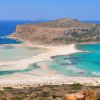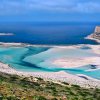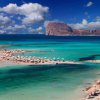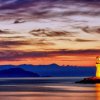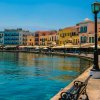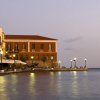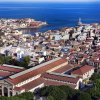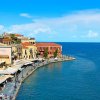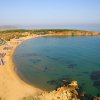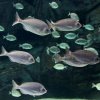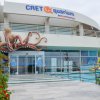Apokoronas villages
Approximate time 4 1/2h
Discover the natural beauty as well as the cultural and historical heritage of Crete. Take a "time travel" from the Hellenistic period to the modern era, through the picturesque landscape of rural Crete:
- From the ancient Aptera (the «little Pompeii of Crete») to
- an Olive Tree (3000yrs old) & Traditional Olive Press and to
- one of the oldest Byzantine churches with its impressive decoration
The tour begins with a visit to the ancient Aptera (one of the most important ancient city-states of Crete) that constitutes a unique area of history, civilization and scientific interest.Estimated visit time on site: 1h15min.Then, by a route of outstanding natural beauty in the foothills of the White Mountains we would visit an ancient Olive Tree (estimated of 3000 yrs of age) as well as a Traditional Olive Stone Press.
The excursion continues to a Byzantine church (dated by the 11th century AD) that is considered one of the most beautiful churches in Crete since the walls are painted carefully, focusing on shades of blue. It is definitely one of the best examples of Byzantine architecture in the island.
- Taxi price 180 €
- Minivan price 270 €
All day relax on the beach!
Details and Prices
The famous lagoon of Balos is located approximately 56km northwest of Chania and 17km northwest of Kissamos. Balos is famous for its turquoise waters, the wild natural beauty and the beautiful exotic scenery. The sea is very shallow and warm, ideal for young children. In many places the sand has a lovely pinkish color, because of millions of crushed shells. Beyond the rocks at the boundaries of the lagoon, the water is deeper and colder, ideal for a snorkeling. The lagoon and the wider area, with rare species of flora and fauna, are protected under the Natura 2000 program.
Ideal for cruise ship!
The city of Chania is built - according to the archaeological research - on the ruins of ancient Kydonia, which according to the mythology was founded by king Kydon and was one of the most important cities of Crete, as Homer mentioned, whereas Kydonians are supposed to be a pre-Hellenic tribe. Chania is a wonderful mixture result of Eastern and Western civilizations. During the ancient period (3.000-2.800 B.C.) the old harbour was used by the ancient Minoans, as crossroad of all five Continents. Furthermore, this harbour hosted ancient Kydonia to the late 7th century A.D., one of the most important cities of ancient Crete, while it was conquered many times during the past by Romans, Byzantines, Venetians, Turks, Hebrews, Egyptians, and Arabs, till the end of the 19th century, when it was liberated. Finally, Chania – as well as the whole Crete - was united with independent Greece in 1913 with the significant help of the great Greek politician Eleftherios Venizelos. The strict massifs meet the deep light blue of the sea in Chania, creating a landscape of irregular natural beauty. The beaches with crystal waters, the lakes, the gorges, the rich flora and fauna, and the benign climate create ideal living conditions and an exciting environment that you should explore.
Ideal for cruise ship!
The beach of Chrissi Akti is located in the Municipal Unit of Nea Kydonia, only a few meters east of Agii Apostoli beach and 2,5 km west of Chania. It has been awarded Blue Flag and its name results from the golden sand of the beach. It constitutes an attraction for thousands of visitors every year, who visit this beach in order to swim in the crystal clear water that is not influenced by meltemi wind. The length of the beach is 500m. It is well organized, including sunbeds, umbrellas and changing room, as well as lifeguard. The beach is ideal for families with children because of the fine sand, the shallow water and the well organized playground.
You can combine the excursion to CretAquarium with Knossos Palace!
The creation of a large and modern sea Aquarium in Crete was a challenge as well as a vision not only for the local research society but Cretan society as a whole. The impressive response from the hundreds of thousand annual visitors to CretAquarium justifies the painful attempts that were made by the former Institute of Marine Biology of Crete as well as the current single body for marine research in the country -the Hellenic Centre for Marine Research. CretΑquarium is an expert in presenting species and ecosystems of the Mediterranean, a sea of unique biodiversity that gave birth to ancient civilizations and welcomes millions of visitors every year from all over the world. Offering 60 tanks of different sizes, containing a total amount of 1,700,000 litres of sea water,
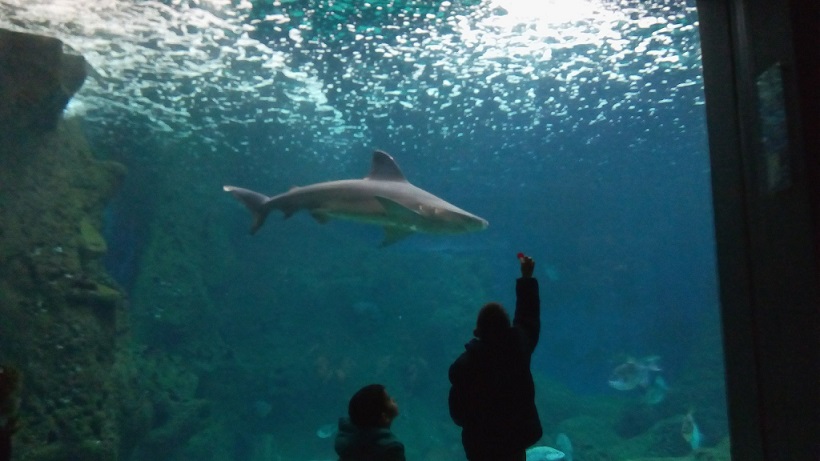
it is home to 2000 sea animals, 200 different species found in the Mediterranean basin, and together with the appropriate scenery, it successfully represents the Cretan and Mediterranean sea beds. Additionally CretAquarium designs and implements educational programmes and other innovative services, treats injured animals and is constantly enriched with new marine species. The expertise possessed by the Aquarium on the presentation of the Mediterranean species and ecosystems is backed up by the long experience of the Centre in Mediterranean marine research. The Mediterranean Sea preserves an impressive biodiversity, gave birth to ancient civilizations and welcomes millions of visitors each year. Each visitor has the opportunity to see the sea inhabitants of the Mediterranean, to learn, be charmed by them and contribute towards its sustainable future. At CretAquarium, the attractions become knowledge and experiences raise questions.


